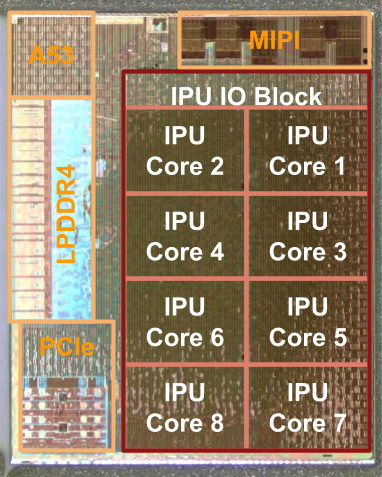The camera on the new Pixel 2 is packed full of great hardware, software and machine learning (ML), so all you need to do is point and shoot to take amazing photos and videos. One of the technologies that helps you take great photos is HDR+, which makes it possible to get excellent photos of scenes with a large range of brightness levels, from dimly lit landscapes to a very sunny sky.
HDR+ produces beautiful images, and we’ve evolved the algorithm that powers it over the past year to use the Pixel 2’s application processor efficiently, and enable you to take multiple pictures in sequence by intelligently processing HDR+ in the background. In parallel, we’ve also been working on creating hardware capabilities that enable significantly greater computing power—beyond existing hardware—to bring HDR+ to third-party photography applications.
To expand the reach of HDR+, handle the most challenging imaging and ML applications, and deliver lower-latency and even more power-efficient HDR+ processing, we’ve created Pixel Visual Core.
Pixel Visual Core is Google’s first custom-designed co-processor for consumer products. It’s built into every Pixel 2, and in the coming months, we’ll turn it on through a software update to enable more applications to use Pixel 2’s camera for taking HDR+ quality pictures.

Let's delve into the details for you technical folks out there: The centerpiece of Pixel Visual Core is the Google-designed Image Processing Unit (IPU)—a fully programmable, domain-specific processor designed from scratch to deliver maximum performance at low power. With eight Google-designed custom cores, each with 512 arithmetic logic units (ALUs), the IPU delivers raw performance of more than 3 trillion operations per second on a mobile power budget. Using Pixel Visual Core, HDR+ can run 5x faster and at less than one-tenth the energy than running on the application processor (AP). A key ingredient to the IPU’s efficiency is the tight coupling of hardware and software—our software controls many more details of the hardware than in a typical processor. Handing more control to the software makes the hardware simpler and more efficient, but it also makes the IPU challenging to program using traditional programming languages. To avoid this, the IPU leverages domain-specific languages that ease the burden on both developers and the compiler: Halide for image processing and TensorFlow for machine learning. A custom Google-made compiler optimizes the code for the underlying hardware.
In the coming weeks, we’ll enable Pixel Visual Core as a developer option in the developer preview of Android Oreo 8.1 (MR1). Later, we’ll enable it for all third-party apps using the Android Camera API, giving them access to the Pixel 2’s HDR+ technology. We can’t wait to see the beautiful HDR+ photography that you already get through your Pixel 2 camera become available in your favorite photography apps.
HDR+ will be the first application to run on Pixel Visual Core. Notably, because Pixel Visual Core is programmable, we’re already preparing the next set of applications. The great thing is that as we port more machine learning and imaging applications to use Pixel Visual Core, Pixel 2 will continuously improve. So keep an eye out!